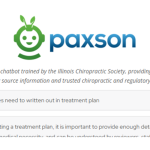
ICD-10 Final Rule Released

Over the last year, there have been several articles written pertaining to the ICD-10 conversion. The Centers for Medicare and Medicaid Services (CMS) has recently released its final rule indicating implementation of ICD-10 will occur on October 1, 2015. There will be no further delays, says CMS.
On October 1, 2015, the United States will implement the World Health Organization’s (WHO) mandate for the clinical modification of diseases and morbidity classification. This is known as ICD-10-CM. The National Center for Health Statistics (NCHS) is the Federal agency responsible for use of the International Statistical Classification of Diseases and Related Health Problems, 10th revision (ICD-10) in the United States. Further delay cannot occur, since WHO is set to release ICD-11 within the next two years.
Only in the United States are the ICD-10 codes used for reimbursement. Utilization Guidelines take the diagnosis codes and convert those into a probable number of treatments. Due to the conversion, physicians will need to modify the way they collect patient data and document visits in their charts. “Specificity” is the word most often associated with ICD-10 documentation, and physicians will indeed be required to collect more information, in more detail, to select the correct ICD-10 code for a symptom or condition. Therefore, the code you use on the claim form must be substantiated, documented and reported “to the highest degree of specificity.”
In the ICD-10 classification system, the documentation will yield the code used. The more specific your documentation, the easier it will be to find the code. Certain codes such as Cervicalgia (M54.2 in ICD-10) will convert easily from ICD-9 to ICD-10. This is not the rule, but rather the exception. Other codes such as sciatica, will now have SIX choices, depending on what side is specified or not and if it is accompanied by back pain or not. In other words, your documentation will determine which code to pick out of the six possible choices for sciatica in ICD-10.
In ICD-10, the number of characters used in the codes will grow from a possibility of three to five characters in length, up to three to seven characters in length. There will be codes for the right side and the left, chronic versus acute, and initial encounter, subsequent encounter, and sequelae. In fact, because of the specificity, we have now expanded the codes from a set of about 17,000 codes to over 70,000 codes. Of course, most chiropractors routinely use between 35-60 codes now and will ultimately expand their use to about 300 codes under the new system.
Insurance companies are looking for to CMS for clarification on which specific codes are to be acceptable in the chiropractic profession. CMS has clarified that the M99.01-M99.05 codes will be used for the subluxation complex, also known as the somatic dysfunction. We can assume that the more specific codes will be desired and generalized, non-specific codes will be deemed “not medically necessary.”
As an example, if you were determining if a claim was payable, would you pay for a claim where the physician diagnosed the patient with shoulder stiffness, but they did not know which shoulder? I hardly think so. It is therefore reasonable that the unspecified code (M25.619) is the code that is not desirable because it is least specific.
Example of code specificity. You would want to use the right or left-sided code, rather than the unspecified code.

In addition to side specificity, some of the codes also require a seventh character at the end to denote if the encounter is the initial encounter, subsequent encounter or for treatment for a sequela. Many of the codes we as chiropractors use will be impacted by the “ordinality” of the code. To date, there are 47,223 codes that are impacted by the ordinality. Thankfully, we will not regularly use all of them. In the encounter, a code such as S93.401 Sprain of the Ankle will require the seventh character to let us know the ordinality. Therefore, you may use S93.401A on the initial encounter, then S93.401D in the sub-acute or recovery phase. Hopefully, your computer software will prompt you or automatically check for the correct code. If not, reference books are available through different sources will lead you to the correct choice.
With less than one year left until the transition, practices should prepare now for the upcoming ICD-10 change requirement on October 1, 2015. Physicians and staff need to closely examine how they are documenting the cases, as well as, implementing policies and procedures to make the transition seamless. Look for further articles coming over the course of the next several months. Classes will also be offered by the Illinois Chiropractic Society to help prepare you and your staff. Look at our website at www.ILchiro.org or sources available at www.CMS.gov/ICD10.
Dr. Fucinari and the ICS will be presenting several classes in the coming months to aid the doctor and staff in correct compliance procedures. For an updated schedule of classes and locations, go to www.ILchiro.org or www.AskMario.com. Dr. Fucinari is a Certified Medical Compliance Specialist and a Certified Insurance Consultant. Dr. Fucinari is the author of several books, including, ICD-10 Coding of the Top 100 Conditions for the Chiropractic Office, available at www.Askmario.com For further information on compliance audits, books or record reviews, please contact Dr. Fucinari at Doc@Askmario.com

















